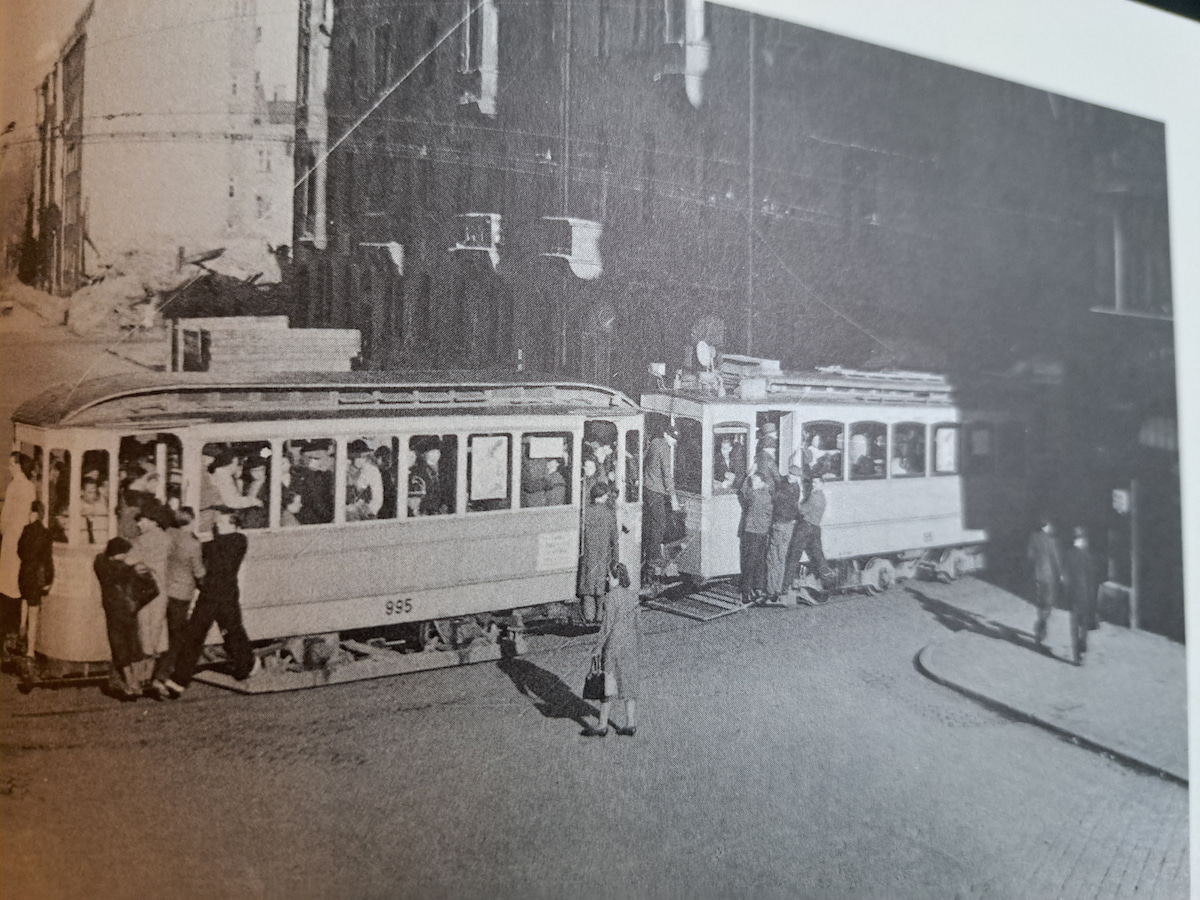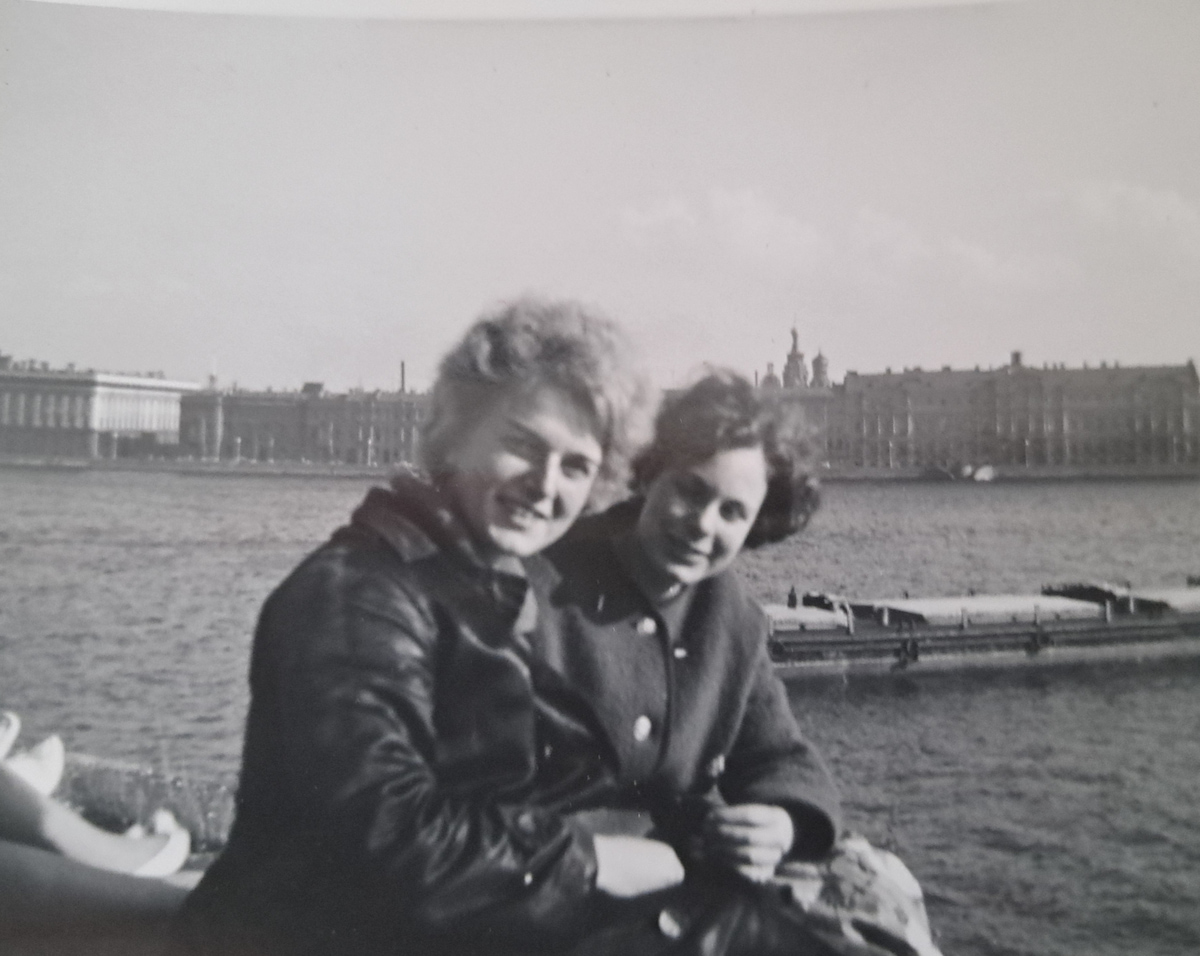From Detroit to Munich: How a year abroad shaped the life and career of WSU alumna Carol Holdengräber
In her sophomore year at Wayne University, Carol Holdengräber (JYM '63-'64, WSU '66) became aware of the Junior Year in Munich program. Carol’s German teacher mentioned it casually in class and Carol approached her with many questions. Those questions became the start of a life-changing experience.

Carol grew up in Detroit. Her family was close-knit, but her parents also had expectations that their daughters would attend an elite high school, one that, as Carol jokes, had "a 36 club: You had to own 36 cashmere sweaters to belong." Following in her sister’s footsteps, Carol decided she wanted to attend Cass Technical High School instead. In the midst of the Cold War, the school had developed a "science program to try and get these kids to ... become rocket scientists, basically and beat the Russians."
At Cass, Carol again chose her own path by deciding to study art history on top of a standard college preparatory curriculum. The program was challenging and she remembers many a late night completing the homework for all of her classes: "I used to read about the Russian students, how bad they had it because they had to stay up until 10 o'clock at night doing their homework ... I would have kissed the ground for 10 o'clock; I was up until midnight."
Despite the late nights, Carol was up to the challenge of Cass Tech and thrived during her time there. She had friends who were focused on both art and science. She "learned a fantastic amount about art and art history." And she graduated with a desire to learn more about the culture of the artists she had studied.
Following high school, she enrolled in Monteith College, a progressive liberal arts program that eventually became the Honors College at Wayne State University. Freedom to pursue her interest in art, literature and science were very important to her and she had this at Monteith. The curriculum involved extensive writing and discussion and many of the classes were interdisciplinary at a time when university education was much more discipline-based than it is today. A course on Darwin and social developments in the nineteenth century stayed with Carol into adulthood and eight years ago, she was able to realize a dream to visit the Galapagos Islands.
From Monteith, Carol’s intellectual curiosity led her to the JYM program and its opportunity to study abroad. She was inspired by Jackie Kennedy, who had studied in France during her junior year in college. Carol wanted to see where the paintings she had studied at Cass Tech came from. She was also planning on becoming a clinical psychologist. Her plans for graduate school required her to know two foreign languages and she wanted to read Sigmund Freud in the original German. Carol started studying the language and her first-year teacher mentioned the Junior Year in Munich in class. Thanks to scholarship support from Wayne State and JYM, she was able to pursue what she calls a "chance of a lifetime."
During her time in Munich, Carol had several different residences. She first lived in adult accommodations in Milbertshofen, then in a girls’ dormitory run by nuns (which, as she laughingly says, she was nicely encouraged to leave due to her independent streak) and then in an apartment in Schwabing. There, she was really able to connect with the student community.

Academic life was exciting. From her first two apartments, Carol took the Straßenbahn to the university. From her Schwabing apartment, Carol could walk to her classes, some of which were in the renowned Große Aula. She felt awed by the academic space: "I actually showed up for classes on time there. So you might say I had a little more respect for classes there." She also learned, though, that unlike at the Monteith Institute, at the LMU, one was not expected to or supposed to argue with one’s teachers. At Montieth, it was assumed that if you weren’t arguing, you weren’t engaging. In Germany, when she suggested to a post-doc student that she thought Goethe had contradicted himself, she "thought he was going to go through the roof."
In her free time, Carol drank coffee at the Café Europa and enjoyed looking at the sidewalk art that students created with pastels. She read and wrote poetry. She spent hours with friends from the University, sometimes talking into the night, sometimes attending plays and concerts. Carol was not much of a drinker, so she wasn’t all that impressed with Oktoberfest or the Hofbräuhaus. In contrast, she loved Fasching with its costumes and music and dancing, and she attended several balls.

As is the case for JYMers through the present day, travel was a formative aspect of Carol’s year abroad. She visited Paris, Vienna, Greece, Israel, St. Petersburg, Moscow and Warsaw. Two of her more extensive trips were to Israel and Moscow.

Carol traveled to Israel via Greece and Cyprus and she worked for a month on a socialist kibbuitz, Shar Ha’Amakim (Gate to the Valley). Most of the people there were Holocaust survivors who spoke Yiddish. Communication took place via a common language somewhere between German and Yiddish.
Carol also journeyed by train to Moscow and on the way, she and her traveling companion briefly got stuck in West Berlin when they gave up their passports and didn’t immediately get them back. Fortunately, the conductor of one of the trains passing through had them and they were able to resume their journey.

Carol’s year of adventure changed her career trajectory. One of her classes involved attendance at a local mental hospital where students listened to doctors interviewing patients. She came to the conclusion that some patients might be in the hospital not because of their own problems but because society didn’t make space for the people they were.
That turned her off to psychology. When she returned to the U.S., she married a fellow Monteith student, completed her degree and moved to the San Francisco Bay area, where she became a computer programmer.
Carol worked in IT for 35 years and then spent eight years as a middle school teacher before she retired. Now she divides her time between Henderson, Nevada and a second home in San Diego. Her children and grandchildren are scattered and she delights in seeing them whenever she can. Her interest in art has continued.
She does acrylic paintings and ink drawings and displays her work in several venues, including Facebook. She is very grateful for good health. After 60 years, she was able to revisit Munich, her former stomping grounds in Schwabing and the LMU as part of the 2024 JYM alumni tour.